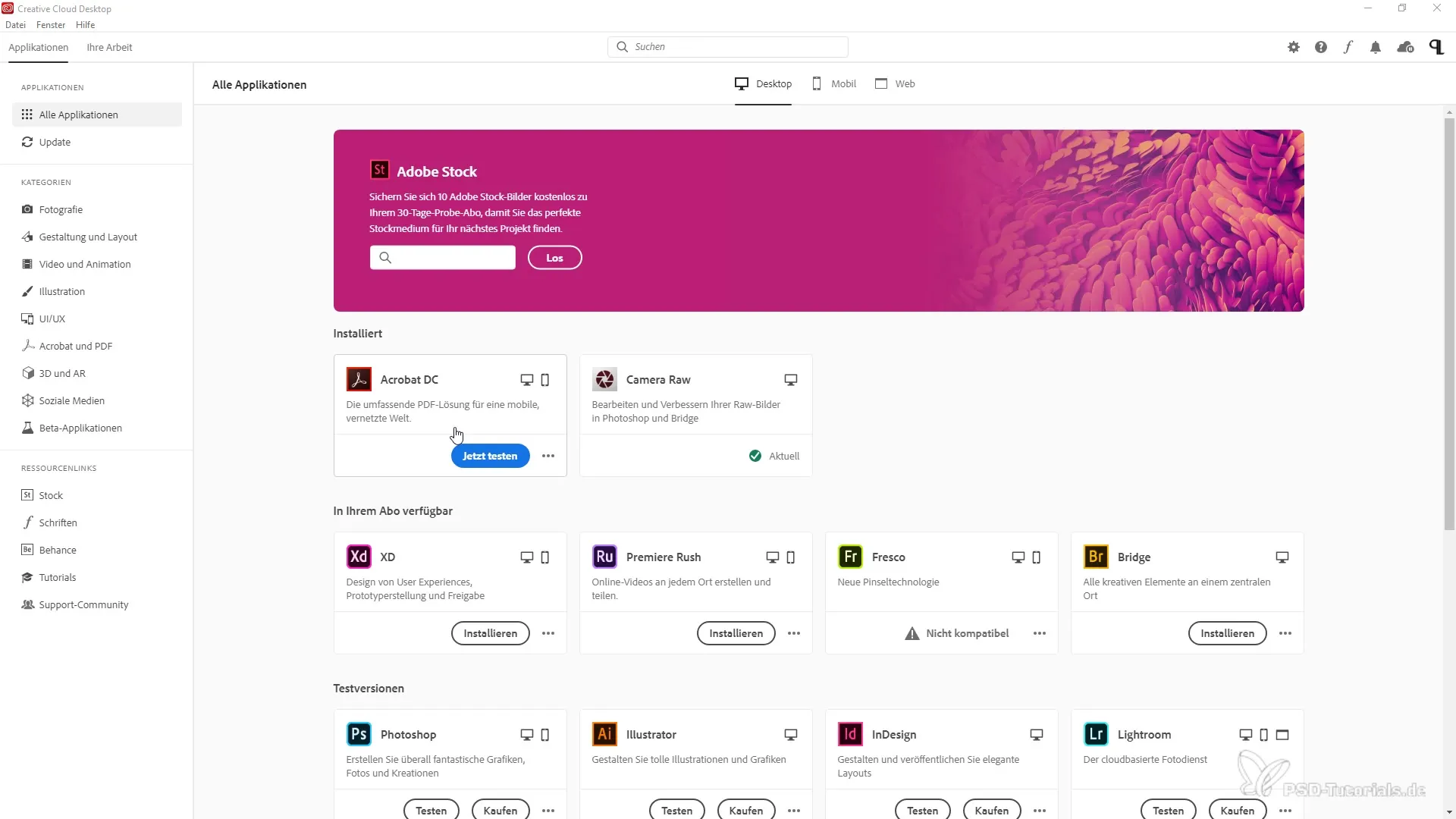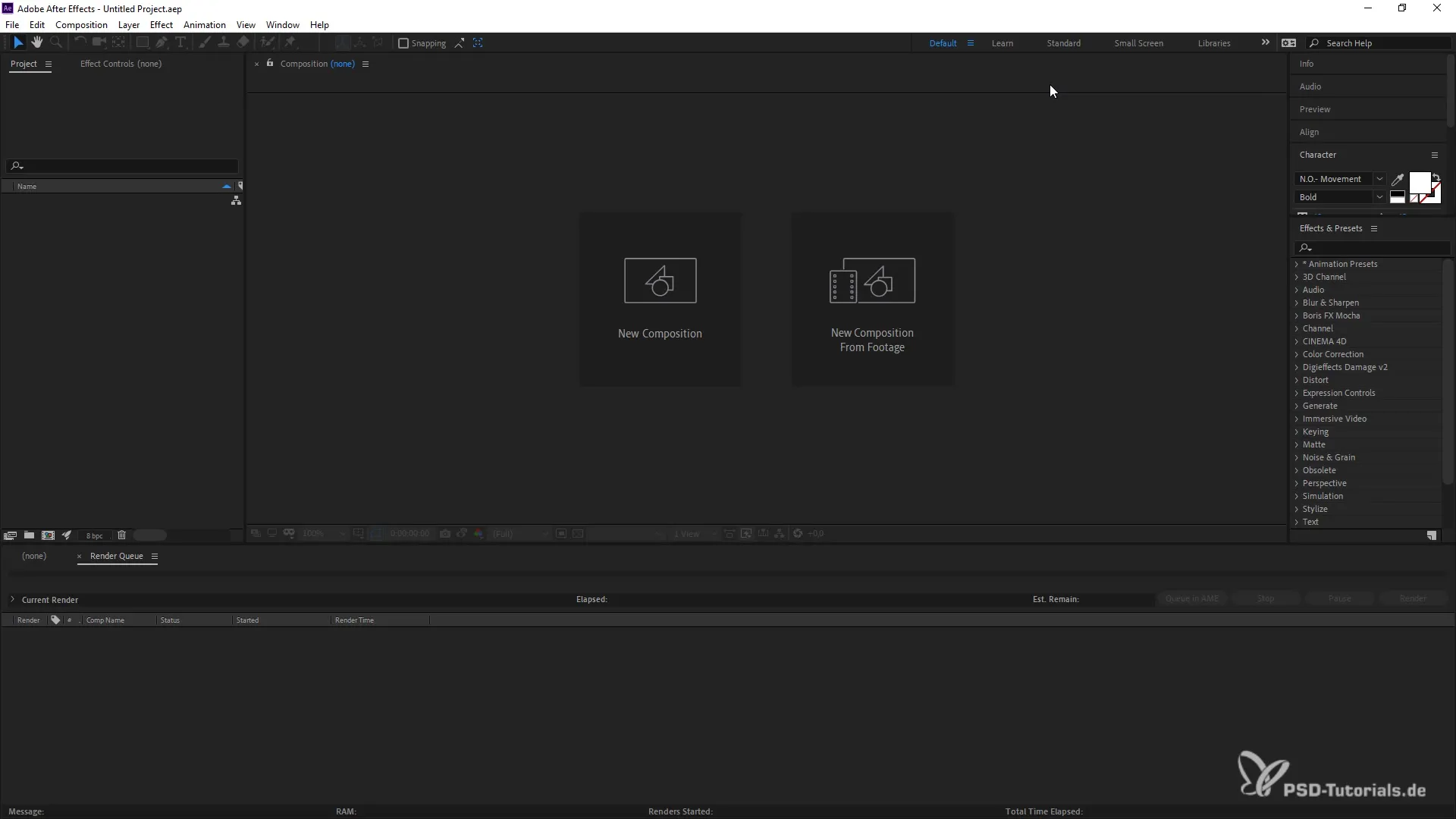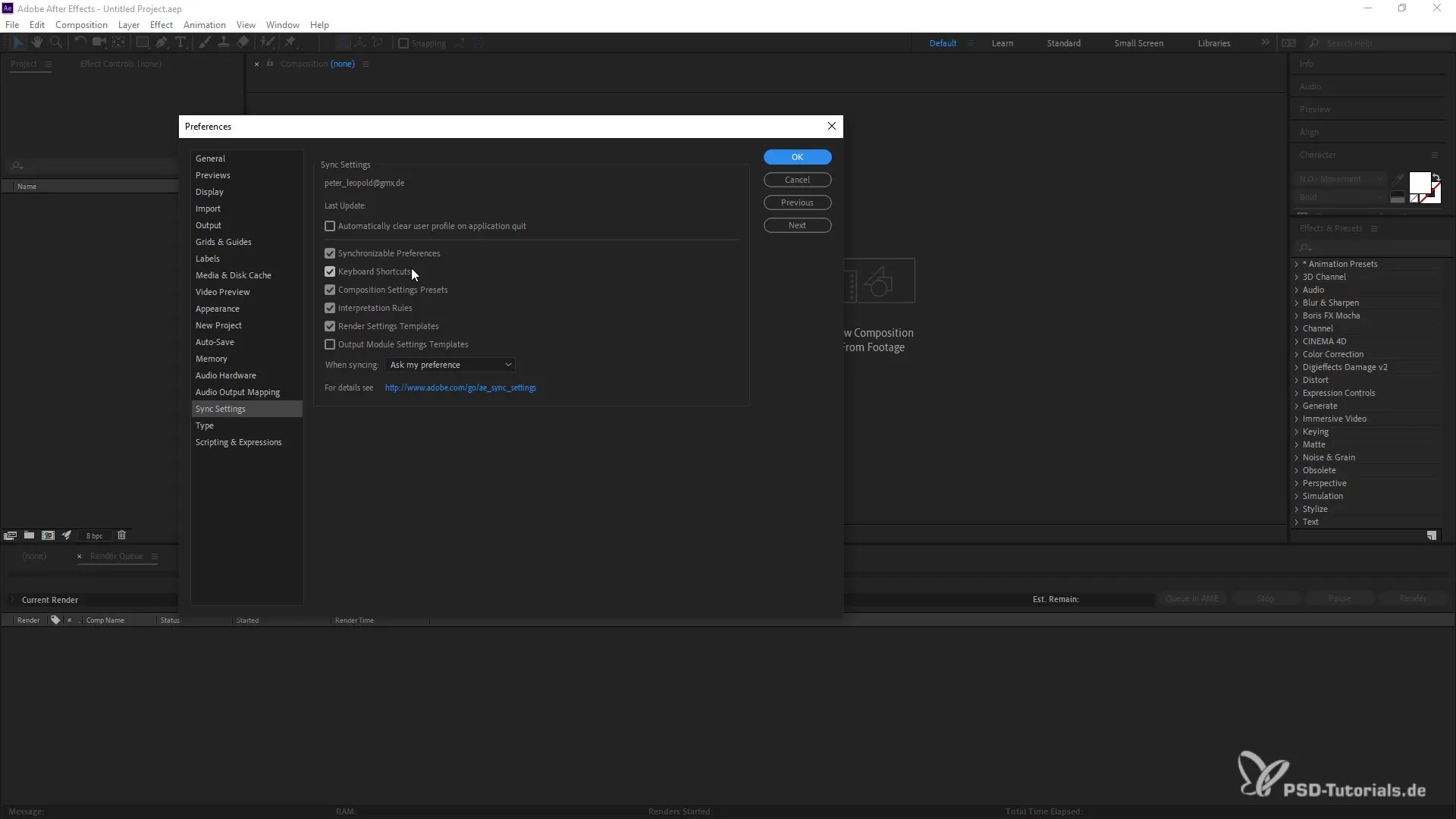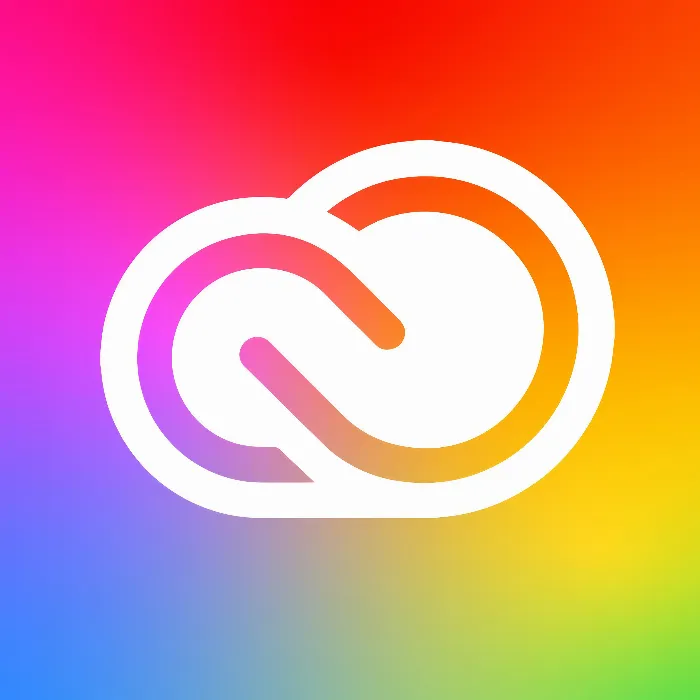Whether you are editing graphics, videos, or texts – the integration options of the CreativeCloudcan save you a lot of time and effort. In this guide, you will learn how to make effective use of the cloud feature of the Creative Cloud Desktop-Appto manage your projects efficiently and access them from different devices. Let's get started!
Main Insights
- With the cloud, you have access to your projects from various devices at any time.
- You can upload individual elements such as graphics, texts, and settings specifically to the cloud.
- There are many additional features that enhance usability and productivity.
Step-by-Step Guide
1. Discover and Use the Cloud Icon
The first step to effectively using the cloud is finding the cloud icon in the Creative Cloud Desktop App. You will find this icon in the upper right corner of the application. Clicking it will open the options for syncing and saving your projects to the cloud.

2. Adjust Synchronization Settings
Once you have clicked the cloud icon, you can adjust the synchronization settings. Each program in the Creative Cloud gives you the option to select specific files and projects to be uploaded to the cloud. For example, you can save a composition from After Effects or graphics from Illustrator.
3. Upload Files to the Cloud
You now have the option to upload various file types to the cloud. This includes not only graphics and texts but also complete program blocks or specific files created in the individual apps. This ensures that all important components of your project are stored in the cloud.

4. Access from Different Devices
A major advantage of the cloud is access from different devices. For example, if you are working on a laptop and then want to continue on your desktop PC, you can access all projects and files that have been uploaded to the cloud. This means you are not tied to a specific location or device.

5. Dealing with Plugins and System Differences
However, be aware that there may be limitations. For example, certain plugins that are only installed for Windows cannot be used on a Mac. This might result in some compositions or effects being unavailable on another system. Nevertheless, you can adjust the app accordingly and continue to use the available files in the cloud.
6. Caution with Sensitive Data
If you are working on projects with confidential data, be careful about what content you upload to the cloud. Especially in cases where an NDA (Non-Disclosure Agreement) is in place, you should ensure that no sensitive information reaches the cloud. Sometimes, it can be advisable to work locally to ensure the security of your data.
7. Project and Document Management
The cloud also offers you the ability to systematically organize various projects and their parts. For instance, when working in Photoshop, you can specifically upload your brushes, layers, and other elements to the cloud. This way, you keep track and can manage your work efficiently.
8. Sharing Content with Colleagues
Another useful feature of the cloud is sharing content. If you are working on a team project, you can grant access to specific files to other members. This not only increases productivity but also fosters collaboration within your team.
Summary — Using the Cloud in the Creative Cloud Desktop App: Here's How
Working with the cloud in the Creative Cloud Desktop App opens up a variety of opportunities for creative professionals. Utilizing synchronization features, accessing multiple devices, and collaborating with colleagues can significantly benefit your workflow. Make sure to adjust the necessary settings for your projects and pay particular attention to handling sensitive data.
FAQ
How can I find the cloud icon in Creative Cloud?The cloud icon is located in the upper right corner of the Creative Cloud Desktop App.
Can I upload any file to the cloud?Yes, you can upload various file types like graphics, texts, and program blocks to the cloud.
How do I access my cloud files from another device?Simply log in to Creative Cloud on any device and access your project files.
Are plugins cross-platform compatible?No, plugins that are written for a specific system are not compatible with other systems.
What should I consider with confidential data?Ensure that you do not upload confidential data to the cloud when working on projects with NDA.


